

Backpacking in Ireland offers immense variety for outdoor enthusiasts, from the rugged hills of the Ring of Kerry to the windswept coastal paths of the Wild Atlantic Way, including popular destinations like the Wicklow Mountains National Park.
And that’s what this post is all about – backpacking in Ireland. We’ll provide tips to help you prepare for backpacking in this diverse country as well as showcase the TOP 5 multi-day trails in Ireland.
Interested? Let’s get started.
Explore Ireland’s best scenic long trails for epic adventures:
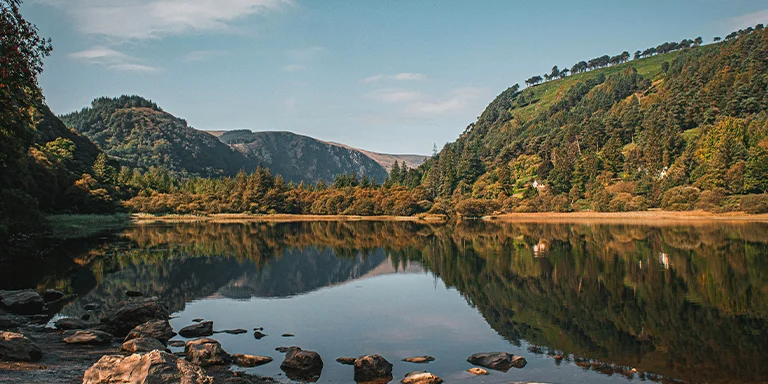
Length: 79.6 mi / 128.1 km
Type: Point to point
Difficulty: Hard
Elevation Gain: 15 314 ft / 4668 m
Location: Wicklow Mountains National Park
Estimated Hiking Calorie Burn: 19 170 calories
More Details: See on AllTrails
The challenging 79.6-mile Magnificent Mullaghmore Loop near Dundrum, County Dublin takes experienced backpackers about 39 hours to complete. The trail traverses the Wicklow Mountains and Glenmalure Valley, passes the 100-foot Carrawaystick Waterfall, and follows remote mountain roads before reaching dramatic sea cliffs, windswept beaches, and breathtaking views of Mullaghmore Head’s rock formations, with opportunities to see dolphins and seals. With its diverse landscapes and natural wonders, this point-to-point trail is a must-do for avid backpackers.
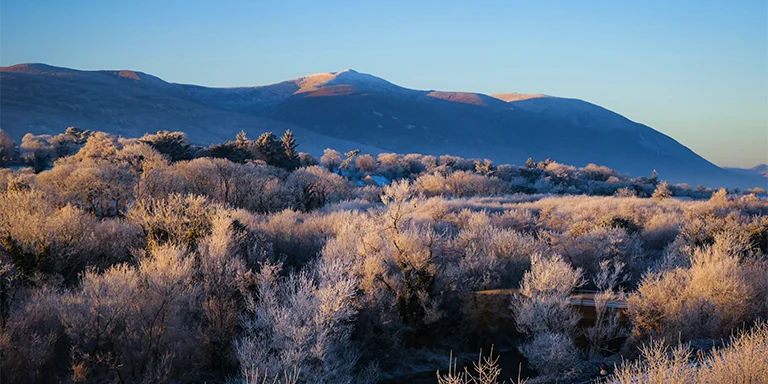
Length: 113.5 mi / 182.6 km
Type: Loop
Difficulty: Hard
Elevation Gain: 12 782 ft / 3896 m
Location: Tralee
Estimated Hiking Calorie Burn: 27 400 calories
More Details: See on AllTrails
The challenging 113.5-mile Dingle Way loop near Tralee, County Kerry takes experienced backpackers about 46 hours to complete. The route traverses varying landscapes around the Dingle Peninsula, the most westerly point in Europe, with fantastic ocean views and historical landmarks. Highlights include hiking over Mount Brandon, descending into Dunquin, and walking sandy beaches towards the end. Though popular, solitude can be found during quieter times. With stunning scenery and wildlife encounters daily, the Dingle Way is a breathtaking backpacking adventure.
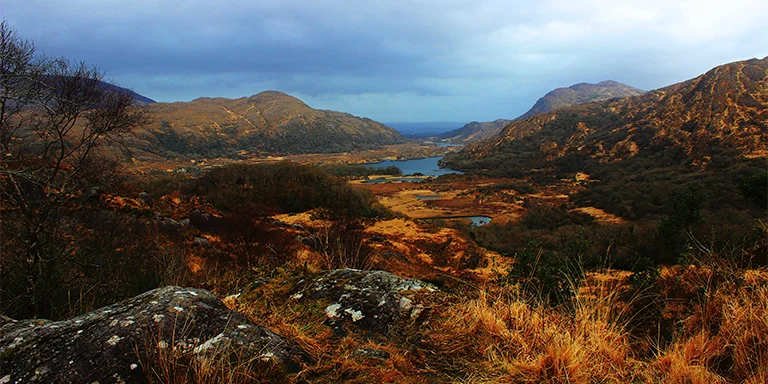
Length: 133.6 mi / 215 km
Type: Loop
Difficulty: Hard
Elevation Gain: 18 864 ft / 5750 m
Location: Killarney
Estimated Hiking Calorie Burn: 32 200 calories
More Details: See on AllTrails
The challenging 133.6-mile Kerry Way loop near Killarney takes experienced backpackers about 58 hours to complete and is marked by yellow arrows on a black background. The trail circles the scenic peninsula, passing through varied landscapes with lakes, moorlands, and coastline, but with significant elevation gains. Though popular, quieter times allow solitude. Highlights include adorable towns and villages along rivers and mountains, with historical sites to marvel at. With beautiful scenery and an opportunity to reconnect with nature and history, the Kerry Way, Ireland’s longest waymarked trail, is a soothing yet adventurous backpacking experience.
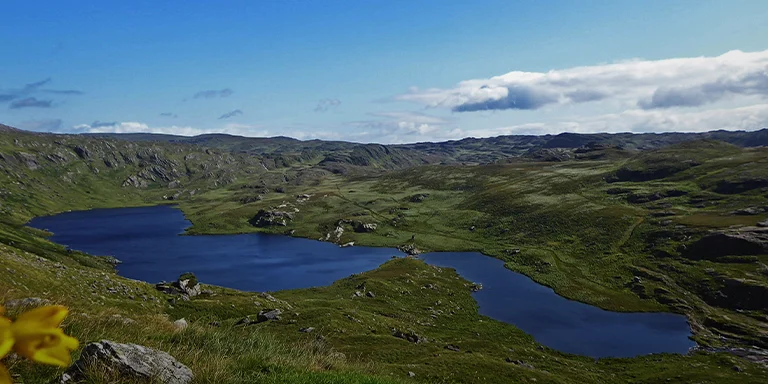
Length: 130.6 mi / 210.2 km
Type: Loop
Difficulty: Hard
Elevation Gain: 23 520 ft / 7169 m
Location: Glengarriff
Estimated Hiking Calorie Burn: 25 680 calories
More Details: See on AllTrails
The challenging 130.6-mile Beara Way loop near Glengarriff takes experienced backpackers about 62 hours to complete and passes through stunning mountain and coastal scenery on the Beara Peninsula. The trail features prehistoric remnants like standing stones and burial monuments, as well as villages including Glengarriff, Castletownbere, and Allihies. Highlights include Ireland’s only cable car on Dursey Island. With significant climbs and scenic but sometimes foggy terrain navigated by posts, the Beara Way is a rugged yet culturally rich backpacking adventure.
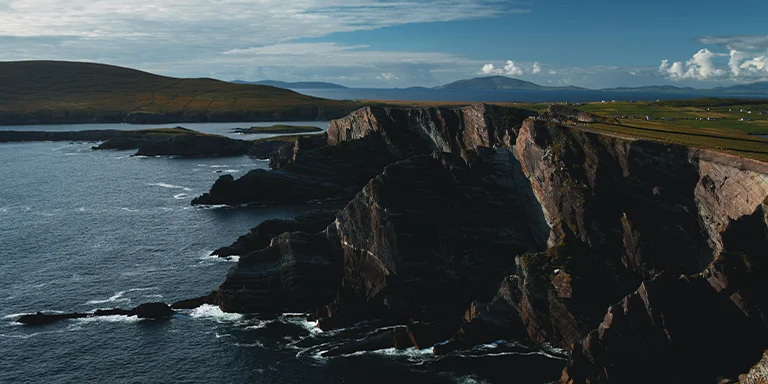
Length: 1336.4 mi / 2151 km
Type: Loop
Difficulty: Hard
Elevation Gain: 118 034 ft / 35 976 m
Location: Crocker’s Wood
Estimated Hiking Calorie Burn: 270 000 calories
More Details: See on AllTrails
The extremely challenging 1,336.4-mile coastal loop near Navan takes highly experienced adventurers about 500 hours to complete and provides stunning but isolated backpacking through Irish towns, cities and villages. With significant historical sites and natural beauty to marvel at along rivers and coasts, this epic journey allows for reflection and reconnection with nature and history, though caution is required for such an immense expedition.
Ireland experiences a temperate maritime climate, characterized by mild temperatures and relatively high humidity throughout the year. Here’s a general overview:
Before making your gear selection, take a look at the weather statistics for Ireland:
| Jan | Feb | Mar | Apr | May | Jun | Jul | Aug | Sep | Oct | Nov | Dec | |
|---|---|---|---|---|---|---|---|---|---|---|---|---|
| High °F | 47 | 47 | 49 | 52 | 56 | 59 | 63 | 63 | 60 | 56 | 51 | 48 |
| Low °F | 39 | 39 | 40 | 43 | 46 | 51 | 54 | 54 | 52 | 48 | 43 | 40 |
| Rainy days | 19 | 16 | 15 | 13 | 12 | 12 | 16 | 16 | 15 | 17 | 20 | 19 |
Not sure if Ireland is right for you?
Don’t forget to check out our backpacking guides for England and Scotland.
When backpacking in Ireland, building campfires for warmth and cooking requires some planning. Fires are only permitted in established fire pits at campsites, and never on protected peatlands which are susceptible to burning. Make sure to use only dead and downed wood gathered from the ground to avoid damaging vegetation. The fire should be contained within the pit using stones if there is no provided grill. Always maintain control of the fire and fully extinguish it before departing by dousing with water until cold. Be conscious too of local burn bans during dry weather.
Given its changeable oceanic climate, proper outdoor gear is essential – boots, waterproof clothing, warm layers, and rain protection. Check the forecast regularly and prepare for sudden storms. Leave a detailed itinerary with someone trusted. Carry a fully charged mobile phone in a waterproof case, plus maps in case of GPS failure. First aid supplies are also important due to remote locations. Watch out for uneven ground, rockfall areas near cliffs, and fast-flowing streams when heavy rains occur. Be aware of ticks in shrubland areas and check clothing and gear after outdoor use.
When hiking in Ireland, you may encounter docile grazing animals like cows, sheep, and horses. Move slowly, give them space, and don’t startle them. Keep dogs leashed as livestock can become aggressive towards uncontrolled pets. Watch for adders sunning themselves on trails and avoid getting too close. Give nesting birds plenty of distance and never touch baby animals.
U.S. citizens do not need a visa to visit either the Republic of Ireland or Northern Ireland for tourism or business purposes for stays of up to 90 days. The Republic of Ireland is part of the European Union but not the Schengen area, while Northern Ireland is part of the United Kingdom, and both maintain open border policies for U.S. citizens. As long as you have a valid U.S. passport, you can enter both parts of Ireland without applying for a visa in advance.
When preparing your travel backpack for an Irish wilderness trekking trip, be sure to pack essential camping gear like a durable tent and sleeping bag to withstand the cool temps, as well as proper layers and waterproof outerwear to stay dry in the rainy climate. Don’t forget hiking boots, cooking supplies, navigation tools, and a first aid kit. Choosing lightweight backpacking equipment will help the outdoor backpacker cover more ground during days filled with exploration and scenic hikes. Being prepared with the right gear and supplies is key to an epic Ireland backpacking adventure.